RAYUNG BROOM: BETWEEN ECONOMIC VALUE AND ART VALUE
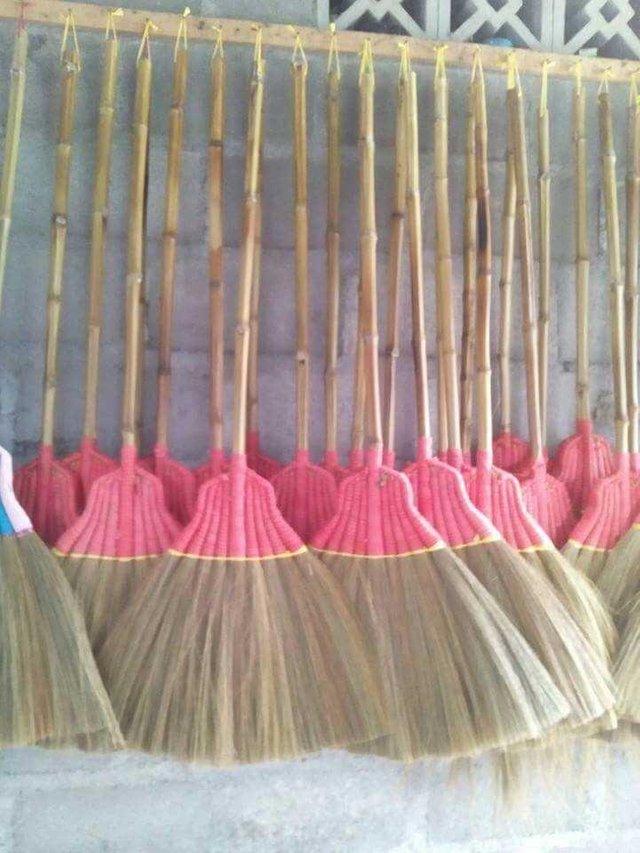
Rayung broom is a type of broom whose stems are made of Gondani bamboo in golden yellow (after drying) and on a few bases of woven brooms that use grass, there are colorful patchworks that make rayung brooms look beautiful.
Rayung broom becomes a secondary tool that is needed by humans in carrying out cleanliness in their environment, mainly used to clean the floor of the room from the influence of dust and dirt in office space, factory space, hotel rooms, food stalls, cafes, or in residential homes .
Economic Value of Broom Rayung
In Keprekan Hamlet, Bojong Village, Mungkid Subdistrict, Magelang Regency, Central Java, there are centers of crafting rayung brooms that have been handed down from generation to generation and have a long history. In this village, almost the majority of the population works as rayung broom craftsmen.
One of the rayung broom craftsmen in Keprekan Village, Bojong Village, is Ridwan (50 Years Old). In the process of making this rayung broom craft, he was assisted by 20 employees from the Bojong area. Usually, the production process of the rayung broom done by the employees is not only done in one main place. Some employees worked on it at home, and even then specialized in processing materials from Gondani bamboo as a broom stalk. There are also employees who only focus on their work by sorting Gelagah grass as a broom mat.
According to his statement, the raw material for making this broom was imported from outside the Magelang area. "Gelagah grass is imported from the Banjarnegara area and Pemalang area at a price of Rp20,000.00 per kilogram. Whereas sticks or stems of rayung brooms made from Gondani bamboo were imported from the Wonosobo area at a price of Rp1,700.00 per stick. Not to forget as an additional ingredient so that the rayung broom looks more beautiful, the patchwork from the convection waste is imported from Bandung and also from Tempuran Magelang at a price of Rp10,000.00 per kilogram, "he said.
Usually the rayung brooms made or deposited by collectors are then marketed to areas of Magelang, Boyolali, Klaten and several other regions in Indonesia such as Kalimantan and Sumatra. In addition, the marketing of rayung brooms spread to several Asian and European countries such as France, Singapore and America.
"On an average day, you can produce as many as 100 brooms starting from 7 am to 4 pm. The selling price of various rayung brooms. This depends on the weight of the Gelagah grass used. Grass weight The standard 2.5 ounce measure is sold at Rp. 10,000, 00 per piece, then the weight of a large 3-ounce bulb is sold at Rp. 17,000 per piece, "he added.
He revealed, "The income from this rayung broom craft business is part of personal income in order to meet the needs of the family and part of the other income to pay the employees and some are used as capital turnover," he concluded.
The role of Magelang District Government in the effort to advance handicraft products by craftsmen, especially rayung broom craftsmen is very important. With the role of Magelang District Government as a facilitator through the provision of training, coaching and organizing exhibitions of creative handicraft products, rayung brooms are able to penetrate the market to foreign countries including France, America and Singapore. But that is not the final achievement. Because, maintaining the quality and existence of a product is far more difficult than just introducing and marketing it. But with the spirit of building mutual cooperation between rayung broom craftsmen and Magelang regency government and the high spirit of cooperation from each party, such problems do not become difficult obstacles.
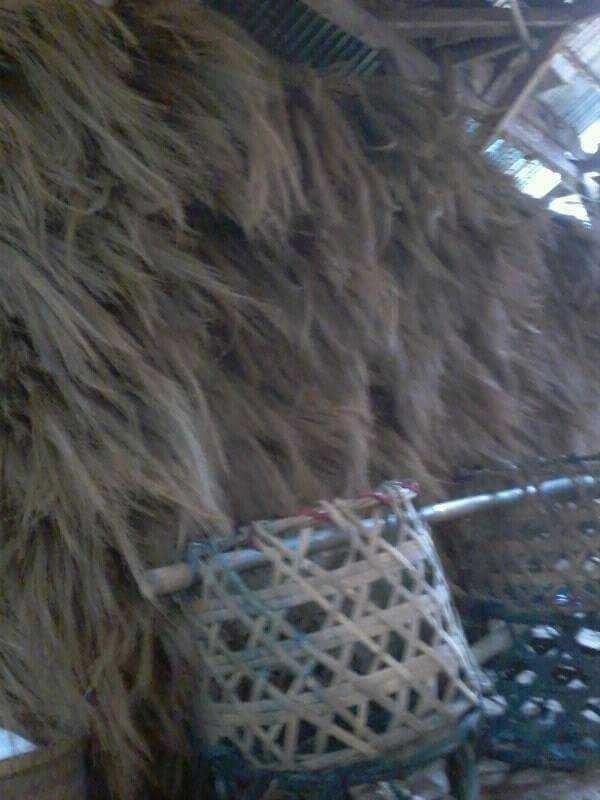
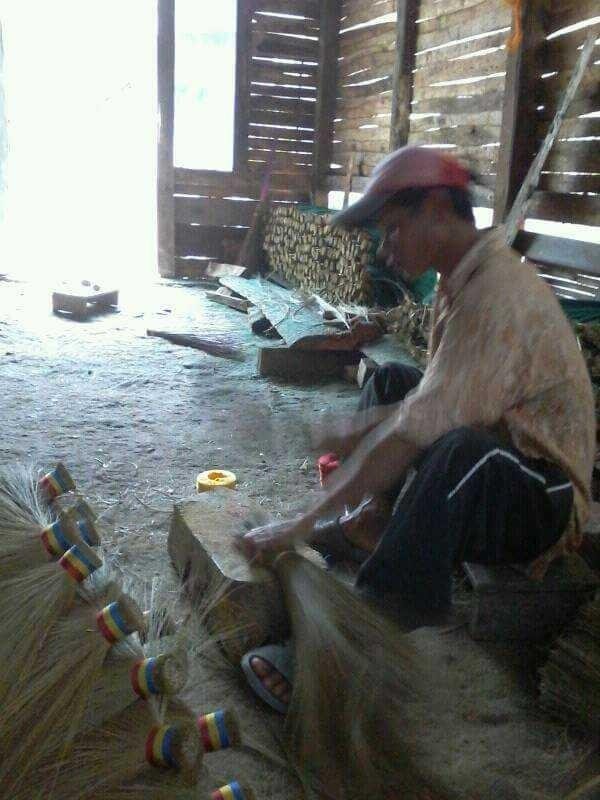
The Art Value of Sapu Rayung
The artistic value contained in this rayung broom can be observed by paying attention to the materials or components used in its manufacture. Making this artwork takes from what is contained in nature. Gandani bamboo is transformed into a broom stalk, then Gelagah grass that grows wild then transformed into a broom mat.
At the Maneges Qudroh program that was held in Keprekan Hamlet, Bojong Village, the decoration that accompanied the event was made with the ingredients contained in the composition of rayung broom. On the roads enter Keprekan Hamlet, some Gondani bamboo and grass Gelagah arranged in such a way. Not forgetting that some of the rope made of palm fiber became an adhesive tool in the manufacture of this artwork.
The main idea of this decoration selection is adjusted to the history and livelihood of the local population. Although some artists use simple materials but this beautiful decoration later becomes an art creation that amazes the eyes and is admired by many people.
Grass is broken originating from Banjarnegara which then entered the area of Magelang Regency was not only used by residents as an ingredient to make rayung brooms. In the art performances at the Five Mountain Festival, Grasak Dance and Panca Warna Mask Dance, originating from Warangan Hamlet, Muneng Village, Pakis District, Magelang District, Central Java, the dancer's accessories or equipment used ingredients from Gelagah grass.
Some of these grasses are placed on the waist and a few strands of grass. Other reeds become decorations on the head resembling a king's crown. The appearance with traditional nuances that seem to be close to nature makes the dancers of Grasak Dance and the dancers of Panca Warna Mask Dance look stunning.
Therefore, the art of making rayung broom crafts and other uses of broom making materials always involves the soul of a craftsman or artist with all thought and mature calculations to achieve the final work of art that emphasizes its beauty, function and meaning.
Benang Merah 2 Main Components: Sapu Rayung Craftsmen and Magelang Regency Government
Magelang regency and rayung broom craftsmen continuously formulate concepts and try to make more attractive leaps to deal with the ASEAN Economic Community (AEC). New breakthroughs continue to be made, both in the form of marketing strategies and the presentation of more varied rayung broom production results, while still taking into account the rules in the manufacturing process.
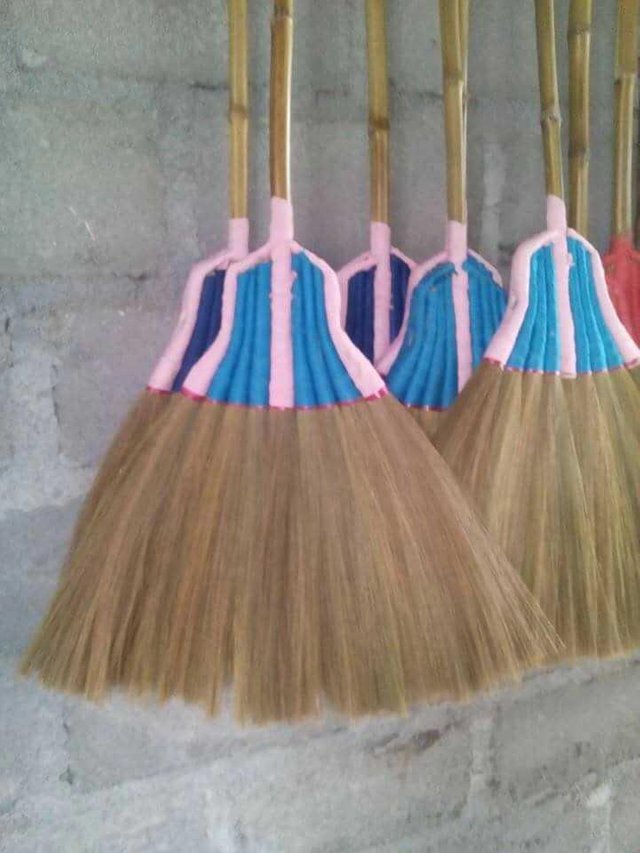
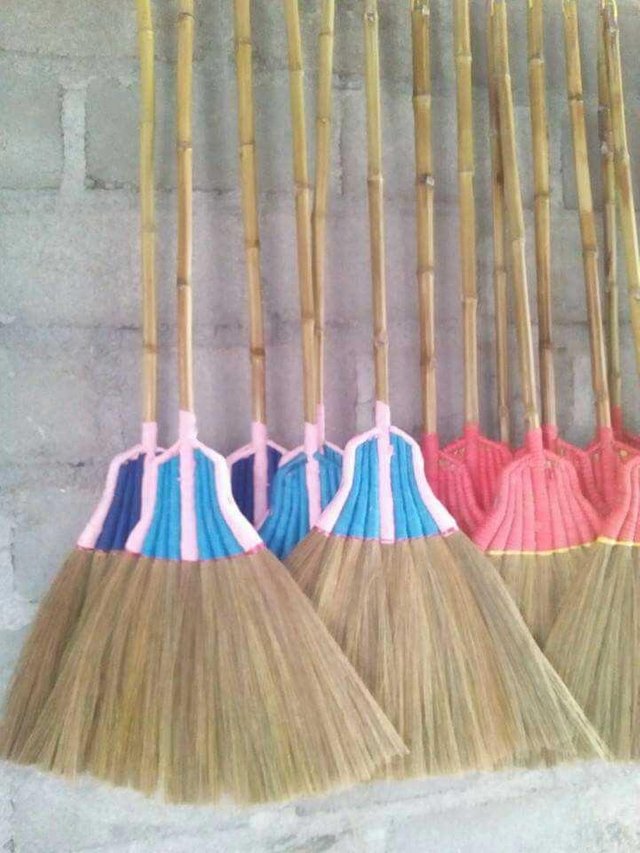
There is a symbiosis of mutualism that arises between consumers of rayung broom and rayung broom craftsmen and with the Magelang regency and makes it an integral whole. That is, all of them have important functions, positions and roles so that there will be a complete balance that is mutually beneficial to each other.
In addition, with the existence of the internet and social media, it is hoped that the existence of the rayung broom, the place of manufacture, and the craftsmen will be well published. This way of disseminating information raises the appeal and interest of the general public to research, and learn about this broom craft. That way, undoubtedly the Bojong area becomes a cultural arts-based tourist destination in Magelang Regency in order to complement the pre-existing tourist destinations.
The development efforts and affirmation of Bojong's regional identity and the identity of Magelang Regency which focus on economic results, the results of cultural arts, and the results of ancestral heritage in the form of rayung broom craft, automatically contribute and are able to encourage and foster the development of Indonesian-ness elements of the local community personality which are the embodiment of a sense of nationalism without leaving the value of art and science that is perceived from the rayung broom craft.
Posted from my blog with SteemPress : http://sabatino.epizy.com/wp/2018/08/25/rayung-broom-between-economic-value-and-art-value/